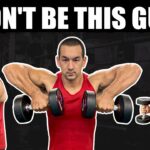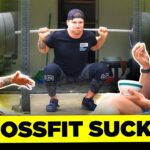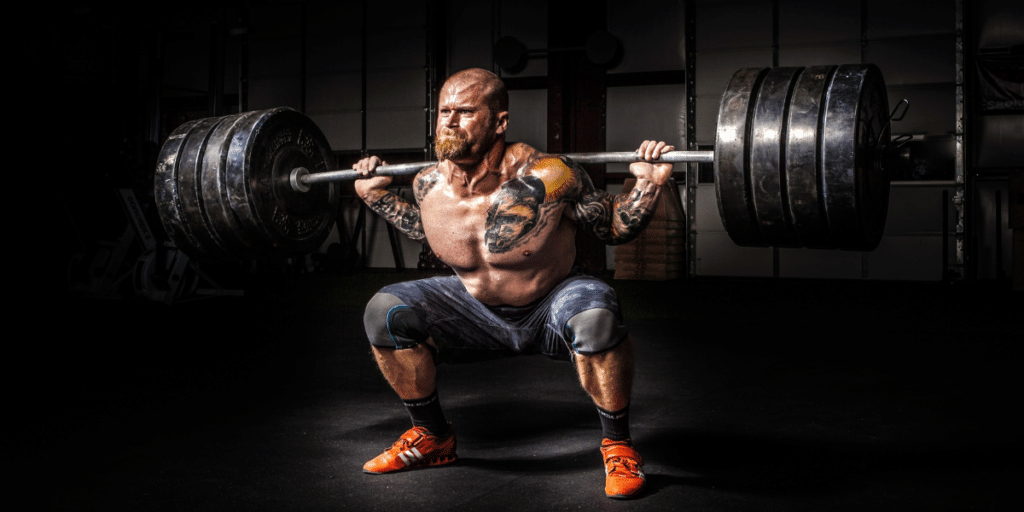
Skipping leg day is the biggest cliche of them all when it comes to the average male gym goer.
In a world obsessed with vanity over performance, too many guys avoid hitting their legs with proper, effective workouts. The thing is, what they don’t realize is that by skipping leg day, they’re hurting their gains elsewhere on their body.
The legs are the largest muscle group in the body, and by training them hard we release growth hormones, which help muscles all over the body to grow. Train your legs, and you’ll help to build muscle over your entire body. Sounds like a great benefit!
In this article I’m going to share with you the most effective leg day workout for men. I’ll show you the science behind leg day workouts, and how if you get them right you’ll improve your fitness, physique and athleticism.
Read on to change your leg day workouts forever…
Jump to:
Understanding Leg Day Training
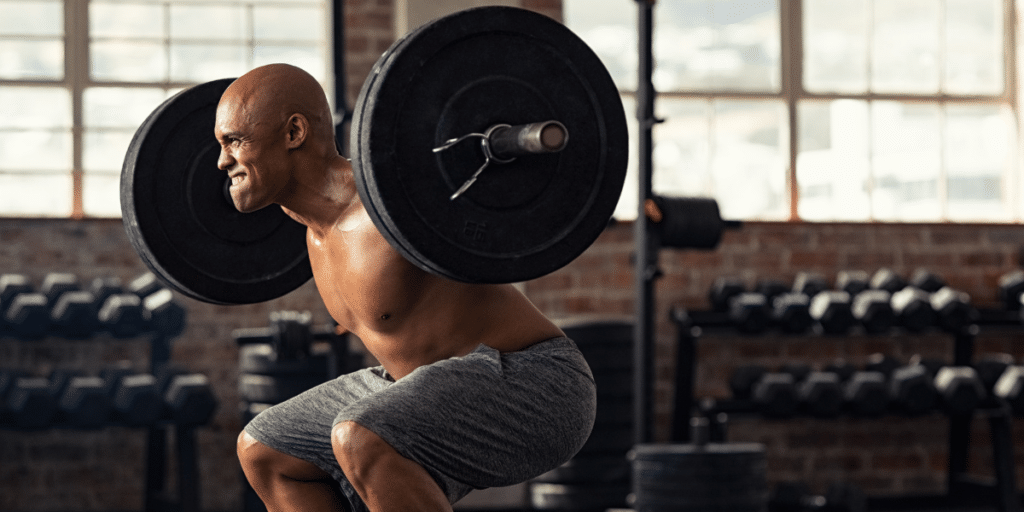
When we think about designing a leg day workout, we’ve got a lot to consider. Unlike your chest and back, we have to think about the front and back of the body in the same session. We need to use a variety of angles to build an effective leg workout.
We’ve got to consider the glutes, the lower back and the hip flexors as well as the quads, hamstrings and calf muscles. This is because they all impact leg training, and they’re also potentially vulnerable spots when it comes to injuries.
These muscles are targeted with different movement patterns, so we can’t just randomly throw a bunch of leg exercises together and think we’ve performed a sufficiently good workout.
We have to be strategic with the exercises we use and the rep ranges we perform them with. Not only is this more effective, it’s also more efficient – we don’t waste any time with these workouts. Every exercise has a purpose.
Leg day is a crucial part of any workout routine for men. Strong legs are important for a variety of reasons, including:
- Improved athletic performance
- Increased physical fitness
- Reduced risk of injury
- Improved posture
- Enhanced overall appearance
The leg day workout I’ll share here will tick all of the boxes above.
Let’s discuss leg anatomy…
The lower body is made up of a complex network of muscles that work together to allow you to walk, run, jump, and perform the range of different exercises we use in the gym. Within each of the main muscle groups, there’s several different muscles.
The major muscle groups in the lower body include:
- Quadriceps: There are four muscles in the quads, and they are located on the front of the thigh. They’re responsible for extending the knee.
- Hamstrings: The hamstrings consist of two muscles, and are located on the back of the thigh. They are responsible for flexing the knee.
- Gluteals: There are three glutes – the maximus, minimus and minor. The glutes are located in the buttocks and are responsible for extending the hip and abduction and adduction of the leg.
- Calves: There are two muscles in the calves. They are located on the back of the lower leg and are responsible for plantar flexing the foot (pointing the toes down).
What this means is that we have to consider all of these muscles and how to target them with effective exercises. If we perform the same handful of leg exercises, with the same patterns of movement we’re not going to do justice to the legs. Instead, we’ll risk overtraining and injury.
In this leg day workout, I’ve considered all of the muscles of the lower body and how to target them effectively.
How to design your leg day workout
When designing your leg day workout, there are a few key factors to consider. The leg musculature, and key to all round leg development involves performing a range of compound exercises through a full range of motion.
Beyond that, we need to factor in a range of points. These include, but aren’t limited to…
- Exercise selection: Choose a variety of exercises that target all of the major muscle groups in the lower body. Use a variety of movement patterns to do this effectively. Keep the muscles training in multiple directions.
- Rep ranges: Use a variety of target rep ranges to hit all of the different muscle fibers in your lower body. Present different challenges to the muscles and develop a broad spectrum of fitness – not just strength or endurance.
- Set number: What represents appropriate volume for the legs to benefit from, and recover from. Shock the muscles occasionally, with high volume or low volume with a particularly heavy weight. The goal is to keep things fresh.
- Rest periods: How do we maximize the effectiveness of the work we’re doing? Sometimes we can use short rest periods to increase the ‘density’ of the exercise, whereas other times we can allow longer rest periods for a fuller recovery between sets.
- Loads: We’ll do some exercises with heavy loads, some with lighter loads. We can’t always assume that heavier loads means more effective exercise. The quadriceps muscle, the hamstring muscle and the glute muscles will contain a variety of muscle fibers that need different stimulation.
With the right balance between these factors, we can design a great leg day workout that will build bigger, stronger and more capable legs. The benefits of this care and attention to program design will be more leg strength, reduced training time and only the most effective leg exercises being considered.
Picking the right exercises
Exercise selection is interesting because no two athletes are the same. Range of movement, relative strength, technique, strength imbalance and even personal preference will impact which exercises you pick, and why.
What we know is that a leg day workout will need…
- Heavy compound lifts (squat pattern)
- Unilateral lifts (one leg at a time)
- Eccentric lifts (emphasis on the extension of the muscle)
- Lateral movement (moving legs from the center to the outside)
- Variety of rep ranges
Put all of these into a workout and it’ll be very effective. You’ll have ticked all the boxes you need to, plus you’ll be providing enough volume and challenge to your legs. We’ll be using barbells, dumbbells and resistance bands in the workout. A major focus here is single leg strength, which is important to a balanced physique and injury prevention.
What we know about rep ranges
The long-held belief around rep ranges was that you use different amounts depending on your goals. If you wanted to build muscle, you’d use a rep range of 8-12 reps. If you were looking to improve strength, you’d use a rep range of 3-5 reps.
That belief has been challenged based on research from 2021 by Brad Schoenfeld et al. In his research paper titled ‘Loading Recommendations for Muscle Strength, Hypertrophy, and Local Endurance: A Re-Examination of the Repetition Continuum’, he concludes…
‘Based on the emerging evidence, we propose a new paradigm whereby muscular adaptations can be obtained, and in some cases optimized, across a wide spectrum of loading zones.’
What this means is that we can’t just stick to the traditional muscle building rep ranges. We know that there are strength and hypertrophy gains to be had at lower weight, higher rep sets as well. Any thorough leg training day would need to factor these in.
It doesn’t mean that we stick to light weights and high reps either. There’s still a place for heavy sets too. We’re all about optimizing for muscle mass.
The leg day workout
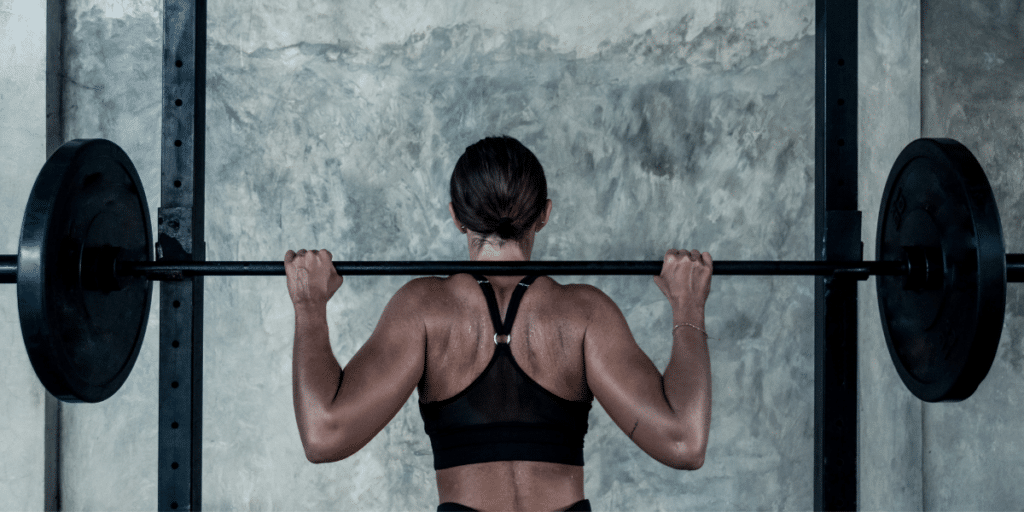
Knowing everything we’ve discussed so far, what would a leg day workout look like? Here’s a sample workout, complete with exercise videos so you know how to execute the exercises correctly…
Warm Up
5 minutes of low intensity, lower-body heavy cardio. Good options include…
- Treadmill
- Air Bike
- Rowing machine
Follow this up with 3 sets of 10 Air Squats. By this point you should be ready to start training.
With each new exercise though, perform a first set with a very light weight – even as you’re well warmed up. This just establishes the movement pattern ahead of the heavy lifting. We’re not shooting for muscle failure in the warm up – it’s just a platform for an effective leg workout.
Barbell squat – 4 x 8-10
The barbell back squat is considered by many as the king of leg exercises. It’s a huge movement, and usually the leg-specific free weight exercise where you can lift the most weight. In this case we’re going for medium volume, medium-heavy weight.
Target muscles – quads, glutes.
Front squat – 4 x 5
Front squats take a little more mobility than other forms of squat, thanks to the bar resting in the front rack position. It makes them a more advanced exercise in some ways. They are great here because they reduce pressure on the lower back, and they activate the core well, giving you more bang for your buck. We’re going for 4 sets of a heavy weight in this case.
Target muscles – quads, glutes, core.
Stiff legged deadlift – 4 x 10
My favorite hamstring exercise – it’s a way to combine lower back training with eccentric hamstring work. It really makes the hamstrings engage, and it allows you to lift a much heavier weight than you would with hamstring curls for example. It’s also an effective way to stretch the hamstrings under load, as long as you lift through a full range of motion.
Target muscles – hamstrings, glutes, lower back.
Feet elevated split squats – 3 x 12 per side
The Bulgarian split squat is a perfect leg exercise in my opinion, and here’s why. It’s unilateral, so forces each side to work hard. By raising the rear foot, we are able to stretch the hip flexors – a muscle that’s notoriously tight in lots of people. It’s a way to engage the quads, glutes and even the hamstrings play a small role in stabilizing the knee. Finally, it’s a good challenge for the core.
Target muscles – quads, glutes, core.
Hip thrust – 4 x 8
Hip thrusts were used for years by strength and conditioning coaches, because they’re an excellent glute and hamstring exercise. As soon as the instagram ‘booty brigade’ learned about them, they exploded into the mainstream. Here we’re going for medium weight, medium volume and a full range of motion.
Target muscles – hamstrings, glutes, lower back.
Calf raises – 2 x to failure
The calf muscle is split into two, the gastrocnemius and the soleus. When we perform the standing calf raise, we hit the gastrocnemius. As a predominantly slow twitch muscle, it’s used to a lot of work. That’s why we do the sets to muscle failure!
Target muscle – gastrocnemius.
Seated calf raises – 2 x to failure
This is the version of the exercise to hit the soleus. When we bend the knee, we target the soleus, which means by combining the two calf exercises we hit both aspects of the muscle. Again, because of the predominantly slow twitch nature of the muscle, we go high volume. Aim for muscle failure.
Target muscle – soleus.
Step ups – 3 x 12 per side
The weighted step up (you can use dumbbells, barbells, kettlebells, weighted vest, sand bag etc for the weight) is a fantastic exercise for the legs. It’s similar to a lunge pattern, and it really makes the quads, glutes and core work hard. Being unilateral, it trains both sides individually as well. This will ramp up the heart rate a lot too!
Target muscles – quads, glutes, core.
Kettlebell swings – 5 x 12
The kettlebell swing is an exercise that a lot of people forget about on leg day, but they shouldn’t. It’s a fantastic way to train the hamstrings with an eccentric contraction. It’s also a great exercise for the glutes, lower back and even mid back. A classic ‘more bang for your buck’ exercise.
Target muscles – hamstrings, glutes, lower back.
Lateral band walks 2 x 40 steps each way
The lateral band walk is a great way to train the glutes laterally (to the side), switching on the muscles in a really targeted way. These exercises are sometimes known as a ‘prehab’ movement – they strengthen important muscles to prevent injury on bigger exercises. Either way, they’re a fantastic exercise for the glutes, and they should be included.
Target muscles – glutes.
Eat, rest and recover

In order to get the most out of your leg day workout, it’s not just about what you do in the gym. It’s important to eat, rest, and recover properly. Make sure to eat a healthy diet that is rich in protein and carbohydrates. Get enough sleep, and allow your body to rest and recover after your workout.
Hit your legs twice per week with this leg day workout, and watch your wheels grow stronger, more athletic and injury resistant in a very short period of time. You’ll be building healthier knee joints and increasing muscle size. Your single leg strength will also be improved.
It’s one of the more advanced programs you’ll read but it’s suitable for beginners and accomplished bodybuilders – just lift lighter weights if you’re a beginner.
Across the workout you’re performing exercises for all of the leg muscles. You’re using a variety of angles. You’re also including lower back and indirect core work too. We’re hitting rep ranges from 5 to 40, so you’re also covering a lot of volume.
It’s a big workout, but if you want incredible results, you’ve got to do incredible things!











